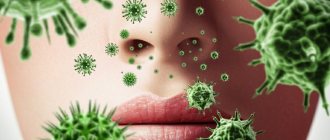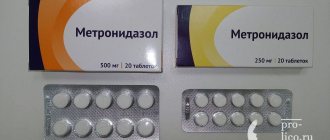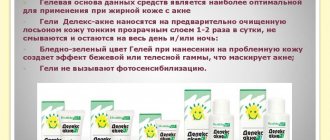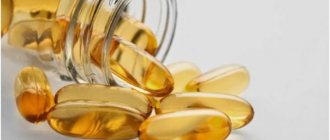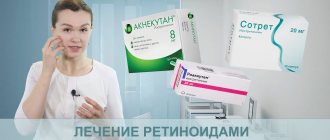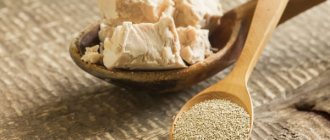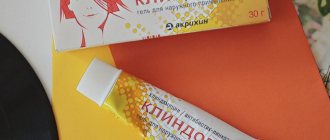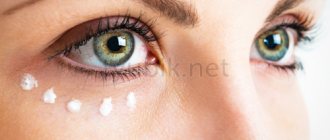How to care for your skin after cleansing and how to heal a pimple wound quickly?
After cleaning, wounds may remain on the skin. They need disinfection. The skin must be treated with products whose action is aimed at narrowing pores. After cleaning, a specialist may recommend undergoing darsanvalization procedures, irradiation with infrared light, and making anti-inflammatory masks, for example, based on clay. Masks can also be made at home.
After the cleaning session, it is recommended to stay in the salon for at least half an hour so that the pores close, this will reduce the risk of infection getting into them. To speed up wound healing and skin restoration, it is not recommended to apply any cosmetics, go to the bathhouse, or play sports for 12 hours after the procedure. You can’t even wash your face, but you can use thermal water or a special aerosol. A cosmetologist can recommend lotions and tonics with disinfecting and soothing effects for home care.
Within a week after cleansing, it is necessary to wipe the skin with an antiseptic preparation that does not contain alcohol. Solariums are prohibited until complete restoration. Sunbathing in the sun is also not recommended; when leaving home, it is imperative to treat areas of the face and body exposed to UV radiation with a cream with high SPF protection.
It is better not to experiment with pharmaceutical preparations on your own, but to ask a cosmetologist to give a recommendation on how to heal acne wounds after cleansing.
Skin regeneration and its features
Skin cells, like other tissues of the human body, are in constant renewal. Millions of them, having outlived their life, die off every day, at the same time, new, young cells are formed and replaced in the germ layer. This process is called regeneration. Scientists have calculated that the total weight of skin cells renewed over a person’s entire life is on average 18 kg.
The skin has a layered structure. Its outer, keratinizing layer - the epidermis - is completely renewed within 2-3 weeks, the deeper layers - germinal, vascular - require a month or more.
We are talking about physiological recovery. If damage or a rash occurs on the skin - acne, furunculosis, then this process proceeds more slowly. Moreover, if the lesion is superficial, within the epidermis, it heals without leaving marks. A deep pathological process affecting the germ layer, vascular, affecting the sebaceous and sweat glands, hair follicles, as a rule, leaves traces in the form of pigment spots, scars, and sometimes disfiguring. In addition, the following reasons slow down regeneration:
- stressful situations;
- overwork, poor sleep;
- poor nutrition;
- hormonal imbalance;
- various abuses (alcohol, smoking, drugs);
This problem is most relevant for the facial skin of young people suffering from various types of rashes that arise under the influence of the listed reasons.
How to heal acne quickly?
You should not squeeze out acne on your own. They need to be treated, and for this you need to consult a dermatologist. He will prescribe treatment and may also recommend visiting a cosmetologist.
Medicines that are used to combat mild to moderate acne include topical antibiotics, for example, Clindovit®18 gel. The main component in its composition is clindamycin phosphate6. The drug exhibits antibacterial activity against propionibacteria and also helps reduce the amount of free fatty acids on the skin6.
To reduce the risk of developing antibiotic resistance, it is necessary to combine the use of Clindovit® gel with benzoyl peroxide or azelaic acid (for example, Azelik® gel)28.
How now to heal the wound after a squeezed pimple?
In order for the wound to go away quickly after squeezing out a pimple and no trace remains on the skin, you can use different means:
- Pharmaceutical preparations, for example, ointments, creams, gels and solutions.
- Traditional medicine (preferably after consultation with a dermatologist).
Subsequently, for the final elimination of post-acne, it may be necessary to use special medications with absorbable properties or carry out special treatment procedures from a cosmetologist.
Pharmaceutical products to remove wounds
To treat the wound left after a squeezed pimple, you can use:
- Vishnevsky ointment. This is a medicine with a very unpleasant odor that will help draw out the remaining pus and relieve inflammation. The ointment can be applied to open purulent wounds under a bandage. It is recommended to simply lubricate small areas on the face with a thin layer.
- Ichthyol ointment. This medicine also remarkably reduces the inflammatory process and promotes healing of the affected areas. Ichthyol ointment will also help draw out pus from the wound if it remains there.
- Antibacterial ointments, for example, Baneocin or Levomekol. Such means will prevent the spread of the inflammatory process and infection by destroying pathogenic microorganisms. Medicines perfectly penetrate into the very source of infection and disinfect it. To get rid of wounds after pimples, it is enough to apply a thin layer of ointment twice a day.
In order to completely cure the wound from a squeezed pimple, you need to be patient. The inflammation is unlikely to go away in one day, although the medications listed can speed up this process several times.
Healing ointments and creams for skin
After the active inflammatory process has been suppressed and skin regeneration has begun, you can resort to the use of healing pharmaceuticals. They stimulate reparative processes and prevent the formation of rough scars. The following will help you cope with wounds after squeezing out pimples:
- Solcoseryl and Actovegin gel. These products contain deproteinized hemoderivative from calf blood. They are widely used in the treatment of a wide variety of damage to the skin and even mucous membranes, since such drugs are distinguished by their regenerating, protective and restorative qualities. Medicines should be applied to the skin in a thin layer up to 3 times a day.
- Eplan. This is a cream with wound-healing, regenerating, bactericidal, analgesic, protective and softening properties. Its use helps not only to heal wounds, but also to avoid infection.
- Bepanten or Panthenol. This is a cream that contains dexpanthenol (a derivative of vitamin B5). This is an absolutely safe medicine that stimulates the active course of regenerative processes.
In principle, all of the above remedies can be used to treat wounds on the face. But they will give a lasting positive effect only if they are used after suppressing the active inflammatory process.
Will Fukortsin help make it go faster?
Fukortsin is a fairly popular antiseptic, also known as Castellani liquid. The instructions for this drug say that it can be used in the treatment of superficial wounds and abrasions on the skin, but you should think carefully before applying such a medicine to your face. Fukortsin burns the skin and can be irritating; in addition, it turns the skin a bright crimson color. But unlike brilliant green, this product is washed off quite easily - for example, with a regular soap solution.
Fukortsin only prevents infection of the wound, dries it out and helps avoid the spread of infection, but does not in any way speed up the healing process.
How to treat with folk remedies for healing?
Doctors are very skeptical about attempts to speed up the healing of wounds on the face (after acne and other mechanical influences) using alternative medicine. Doctors warn that such methods are not 100% sterile, so with a high degree of probability they can only aggravate the problem and provoke the spread of the inflammatory process.
But when the inflammation is completely neutralized, you can use the following to care for the affected skin:
- Infusion of chamomile or calendula. You can wash your face or wipe your face with it.
- Aloe. Aloe juice can be combined with distilled water and used to wipe the face. This remedy will help avoid the formation of scars and prevent the appearance of new acne.
- Sea buckthorn oil. This is a powerful wound healing agent that allows you to get rid of even fairly large wounds without scarring the skin. The oil should first be boiled in a water bath.
Before using alternative medicine on your face, it would be a good idea to consult a doctor or at least a cosmetologist. It may well be that the specialist will still recommend using more reliable and safe pharmaceutical medications.
Clinic
Acne rashes are represented by comedones, blackheads and cystic formations. Comedones look like blackheads. This is nothing more than an accumulation of sebum, dead epithelial cells and dust in the ducts of the sebaceous glands that open on the surface of the skin. Most often, comedones are located on the nose, forehead and chin.
Blackheads are nodules that rise above the skin surface. Inside such a formation contains a purulent core. When inflamed, acne becomes reddish in color.
In turn, cysts are cavities containing pus.
Zincite for skin
What are the healthiest vitamins for facial skin?
useful vitamins for facial skin
- A (retinol) is responsible for regeneration and a healthy complexion, promotes an even tan, eliminates age spots
- C (ascorbic acid) is a powerful antioxidant that prevents the effects of negative factors, and is also involved in the synthesis of protein structures
- E (tocopherol) increases elasticity and turgor, prevents the formation of creases and folds, suppresses the negative effects of ultraviolet radiation
- PP (nicotinic acid) stimulates blood circulation, improves the outflow of excess fluid from tissues, prevents wrinkles after prolonged sun exposure, and prevents the development of melanoma
- Group B (B1, B2, B3, B6, B12) retain moisture, accelerate wound healing, eliminate swelling, slow down the appearance of age-related changes
- K (phylloquinone) stabilizes the walls of blood vessels (effective in the treatment of rosacea and rosacea), eliminates spider veins and other defects, prevents the formation of dark circles in the periorbital area and the appearance of areas of hyperpigmentation
Here are the best vitamins for facial skin. But these are substances that are not in our body, and there are 2 ways to get enough of them: either with food, or with ready-made vitamin complexes for facial skin in tablets.
However, vitamins alone are not enough for youthful facial skin. Macro- and microelements are necessary for beauty and health. They, unlike the first ones, are contained in us, but their deficiency is often noted.
Zinc is one of the elements that is necessary for facial skin, for its beauty and health.
How does zinc affect the skin?
To describe the effect of zinc on the skin, it is necessary to refer to its structure.
Skin is the largest human organ by area. It consists of three layers: epidermis, dermis and subcutaneous fat. It is in the middle layer - the dermis - that fibers are located that provide its elasticity, strength and youth.
Zinc takes part in the synthesis of collagen fibers, which are one of the most important building elements of the dermis and are responsible for its elasticity, and accelerates the process of cellular regeneration. This means that recovery and renewal are accelerated.
Zn also plays an important role in the defense system (immune system). One of the functions of the skin is also protection. This is why zinc supplements for skin are recommended for all women. Zinc for problem skin as part of various cosmetics or vitamins is widely used for the treatment and prevention of skin irritations.
Now there are a great many of them, because the properties of zinc for facial skin have been well studied, and there is no doubt about its benefits. The microelement is found both in complex supplements and in products containing exclusively Zn.
Depending on your skin type, determine what vitamins your facial skin needs.
There are 4 skin types:
- normal
- fat
- dry
- combined (mixed)
What type exactly do you have? If in doubt, consult a cosmetologist and in the future use only those products that indicate your skin type.
Zincite for dry and sensitive skin
If you have dry and sensitive skin that often flakes, take Zincite. Zinc accelerates the division of skin cells and restores its natural beauty. By changing the top layer faster.
Zincite for acne
Oily skin also has its advantages. It dehydrates less often and remains elastic longer. However, it is prone to irritation and acne. If you have skin with acne, you need to take additional zinc, for example as part of Zincite. What are the benefits of zinc for oily skin? Zinc reduces inflammation and accelerates skin regeneration (restoration).
